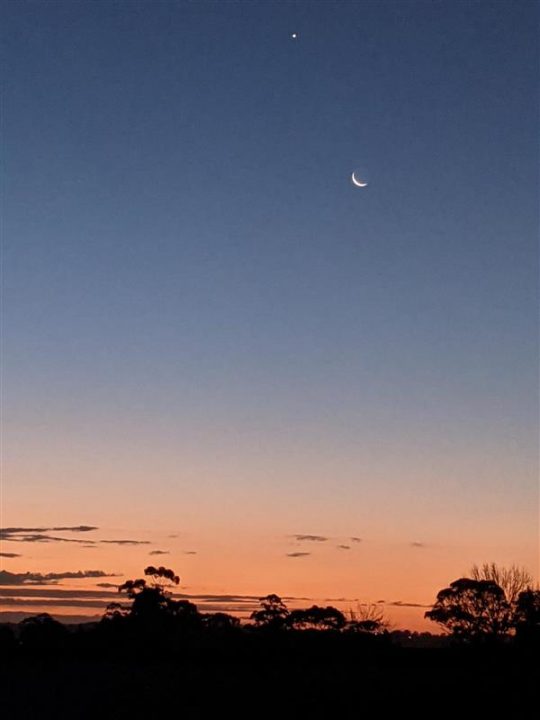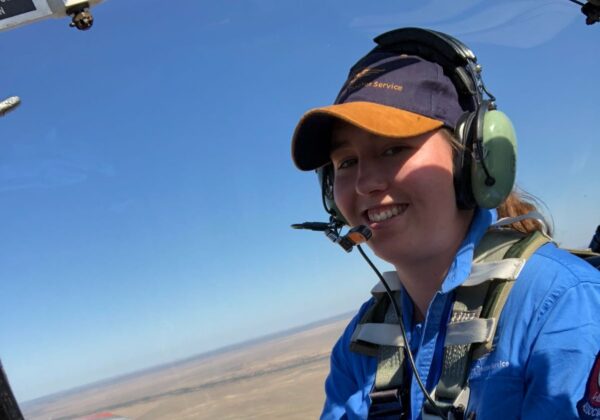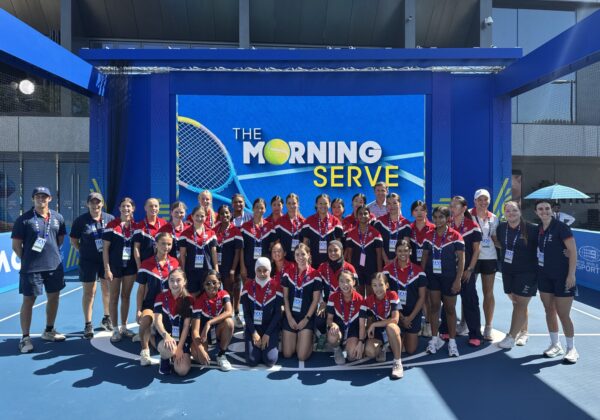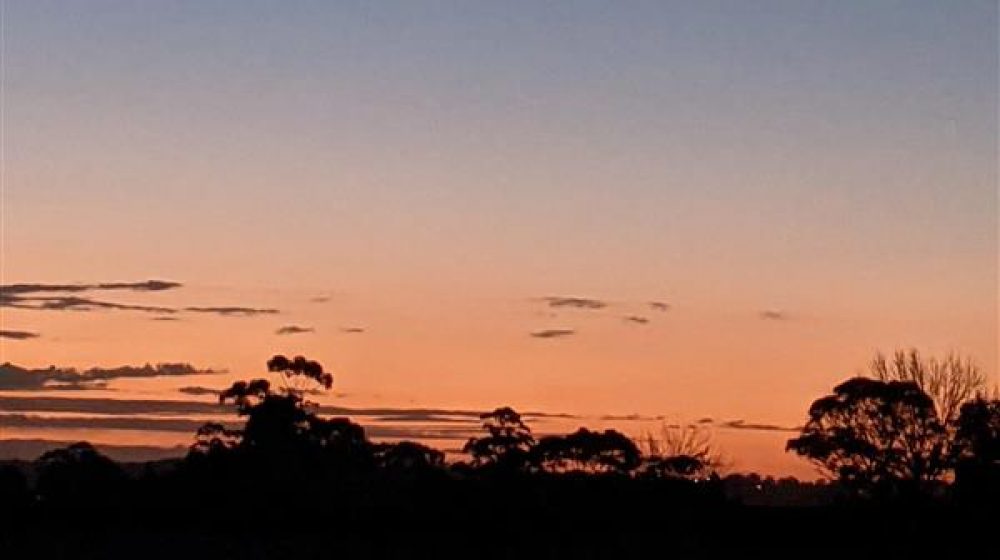
Together in space and time
We may not be able to stand next to each other right now, but we can still share a moment together. We welcome you to look to the sky with us over next few weeks.
Tonight (Tuesday 13 July) the stars are aligned. In the early evening, just after sunset (around 6.00pm to 7.00pm), look to the north-west and find the New Moon.
Clear winter skies are predicted and you will see Venus, a bright white star close by and Mars, a small red star, all in alignment with the Moon.
What are you looking at?
You are looking at the close alignment of two planets and the new Moon.
For guidance on what you are looking for, check out either of these websites.
Stellarium
Use Stellarium on your computer or as an app on your phone. It is great for showing you the night sky in your area in different directions.
Here are some steps to get you started.
- Select ‘Near Sydney’ on the bottom left. If you are in Sydney select ‘Use this Location’ otherwise select your own location on the map.
- Next select the Date and time button on the bottom right of the screen. Set the date to ‘2021-07-13′ and then the time to ’18:00:00’.
- Rotate the viewer using your mouse to point north-west. This will show you what you should see in the sky.
Timeanddate.com
Visit the timeanddate.com website for a similar experience.
What is happening?
All the planets orbit the Sun in the same orbital plane, called the ecliptic, as does our Moon. The planets are not always seen together because they are in different points in their orbits. Tonight, it just happens that the orbits of the Moon around Earth, and Mars and Venus around the Sun, bringing these three objects together to form a line in our viewpoint here on Earth. In reality, they are not close together at all, but millions of kilometres apart and travelling in different directions.
Mars, which is the red-looking star, looks small and red. It is particularly small at the moment because it is on its journey away from us to the far extreme of its orbit. Venus, often called the evening star, is quite close to us right now, hence it shines like a diamond in our sky.
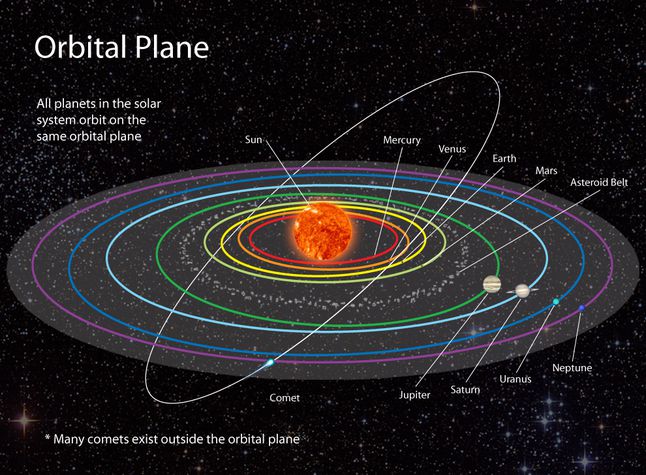
This is astronomical event is a significant event for some First Nations people in Northern NSW. This alignment represents the eyes of Baayami, the supreme creation ancestor. For more information on this aspect of your viewing take a look at this article on the Conversation.
